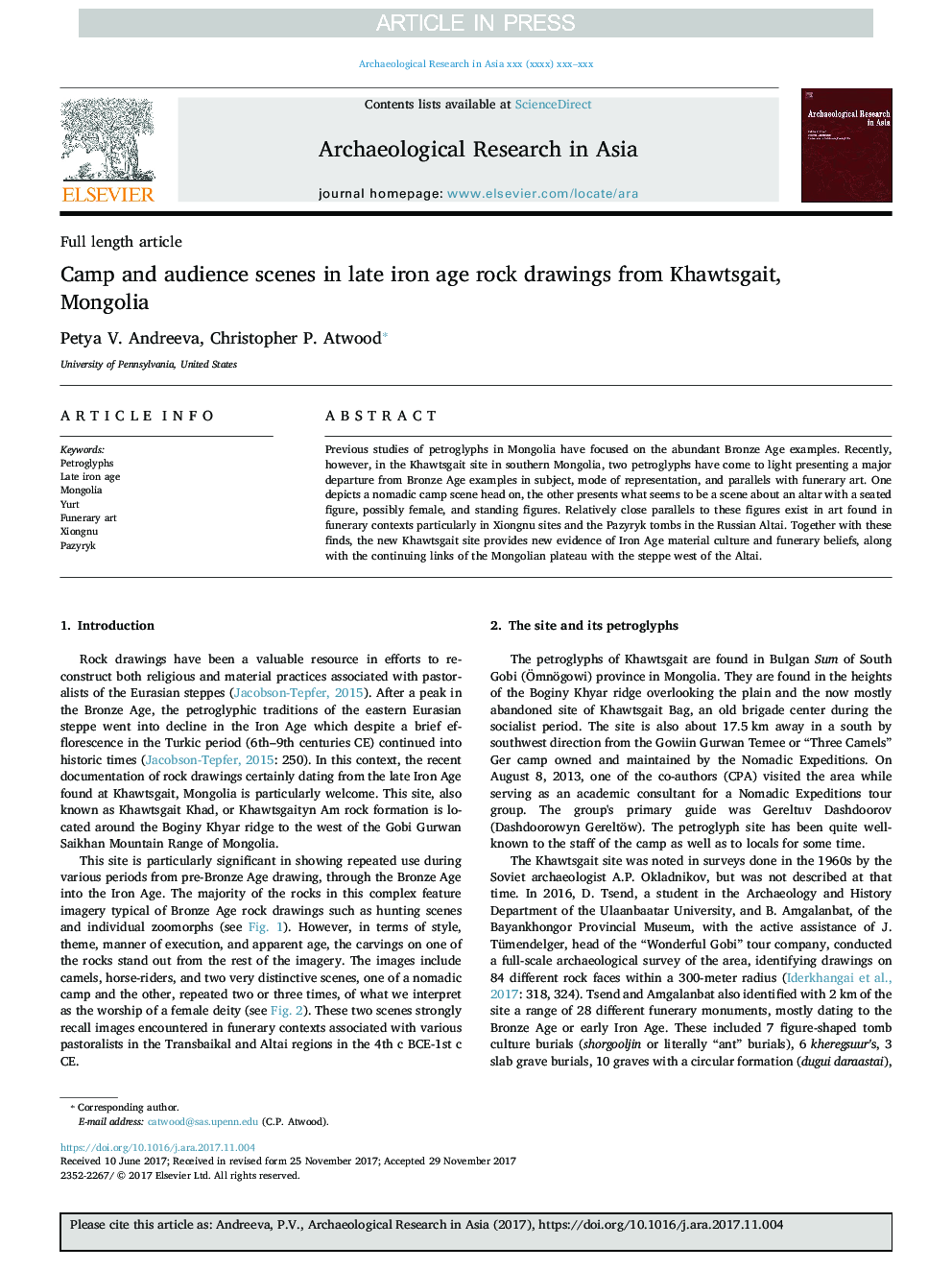| Article ID | Journal | Published Year | Pages | File Type |
|---|---|---|---|---|
| 8942502 | Archaeological Research in Asia | 2018 | 9 Pages |
Abstract
Previous studies of petroglyphs in Mongolia have focused on the abundant Bronze Age examples. Recently, however, in the Khawtsgait site in southern Mongolia, two petroglyphs have come to light presenting a major departure from Bronze Age examples in subject, mode of representation, and parallels with funerary art. One depicts a nomadic camp scene head on, the other presents what seems to be a scene about an altar with a seated figure, possibly female, and standing figures. Relatively close parallels to these figures exist in art found in funerary contexts particularly in Xiongnu sites and the Pazyryk tombs in the Russian Altai. Together with these finds, the new Khawtsgait site provides new evidence of Iron Age material culture and funerary beliefs, along with the continuing links of the Mongolian plateau with the steppe west of the Altai.
Related Topics
Social Sciences and Humanities
Arts and Humanities
History
Authors
Petya V. Andreeva, Christopher P. Atwood,
